hey friend!
I'm Martina.
I provide practical, time-saving strategies that actually work—so you can engage your students, teach effectively, and reclaim your time from the exhausting planning-grading cycle.
Browse Our ELA Resources
Classroom Organization in Middle School and Upper Elementary | Routines and Procedures | Part 4
This middle school English teacher grading strategies for upper elementary and middle school grading and assessment blog post is part of a classroom organization series. This is part eight of ten blog posts all about how I organize different areas of my classroom. Click on any of the links to be taken to each of the posts in the series:
- One: Lesson Planning and Lesson Materials Organization
- Two: Teacher Materials Organization
- Three: Student Materials Organization
- Four: Classroom Routines and Novels Organization
- Five: Classroom Library Organization
- Six: Book Clubs, Novel Sets, and Literature Circles
- Seven: Small Group Organization
- Eight: Grading and Assessment
- Nine: Long-Term and Short-Term Sub Planning
- Ten: Back to School Organization
CLICK HERE to get the Organization Overhaul Complete Classroom Course plus bonus resources for each module.
CLICK HERE to get the complete printable organization E-Book.
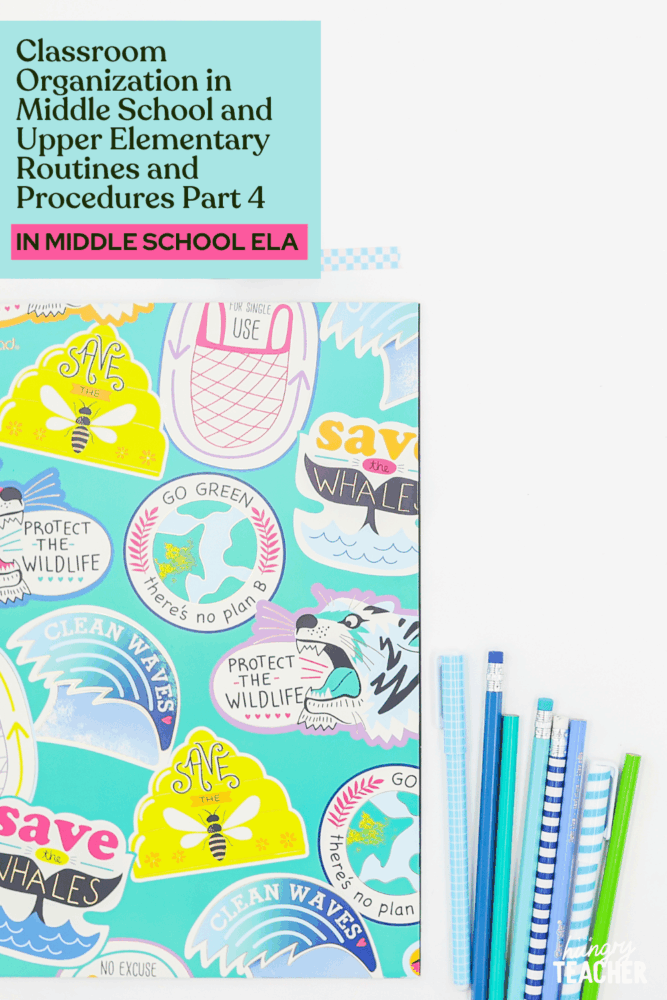
Get the Organization Overhaul Complete Classroom Course
Routines and procedures
My “What do you need?” board might be one of the best and simplest classroom routines I have ever implemented. This came to be when I first started teaching sixth grade and had classes that switched.
My second class, in particular, was horrible about coming into class and getting their supplies. I would tell them what they needed as they walked in- but that seems crazy now! They couldn’t remember what I said.

Instead they would usually just keep asking me over and over, end up messing around with each other, and then get to their desks without anything they needed.
I just used a small whiteboard I had. Honestly, I was pretty bad about changing it, but one of my sixth grade girls in my first hour knew that, and eventually just started doing it for me in the mornings. Eventually both classes were SO good about getting what they needed, because they would just look at the board.
CLASS PERIOD SCHEDULE DISPLAY
This was one of my classroom routines that I adapted a bit when I would started teaching multiple grade levels.
I knew I wanted to implement this same system, but I also wanted to have the daily schedule next to it, so that students also knew “why” they needed to get the supplies they were getting.
These two $10.00 whiteboards are from Wal-Mart, and then I just glued the labels on each.

If students ask me what we are doing or what they need, then I just point to their board.
In this picture, the two schedules and supplies are the same because I was still getting acclimated. By about week four, 8th grade and 7th grade had different schedules, and I used the two boards for that reason.
ROUTINES FOR ELECTIVES
This system is still helpful so that they can get what they need, but it also helps me make sure they have their supplies before I get into the groove of teaching.
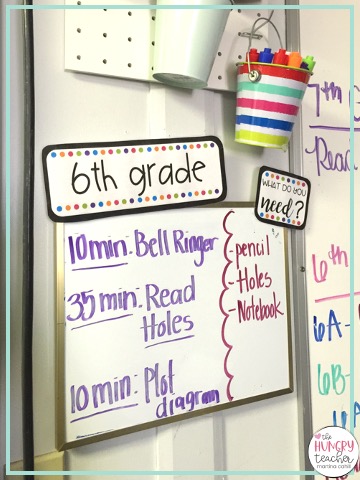
Students ask me at the start of class, if the are missing scissors, glue, etc. and then I can get it while they are doing bell-ringers, instead of while I am trying to teach.
On another note… does anyone else just set Expo markers wherever? I got those pegboard and buckets in the Target dollar spot and they have been life changing. Now I’m not always searching for Expo markers because they are hanging right next to my boards.
PROCEDURES FOR STUDENT NOTEBOOKS
This isn’t the greatest picture, but these are the daily procedures for coming into my class each day. The procedure is the same for all five of my classes:
- Enter the classroom quietly.
- Read the “What do you need?” board.
- Get all materials.
- Read schedule
- Start bell ringer.
- Sit quietly or read until I start instructions.
These procedures and the clear instructions really are based on Harry Wong’s book, The First Days of School. The routines are simple, effective, and puts the responsibility on them. Next to it, are our notebook rules, so that students take care of their notebooks all year. I point to the rules each time I remind them too!

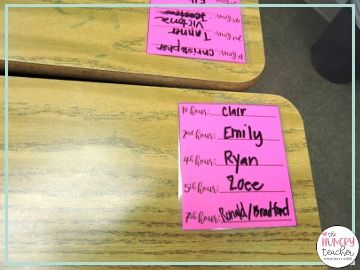
This is a just a simple thing I made because again, Harry Wong is all about making sure students know exactly where to sit the first day of school. It alleviates everyone sitting by their friends and you from going crazy. I just wrote the names next to their hour and made a diagram on the whiteboard. Attendance is a million times easier, because I can see who’s gone without ever having to spend 27 minutes calling out students’ names.
UPDATED STUDENT DESK TAGS
I’ve since upgraded both of these charts to look nicer (I honestly don’t rewrite too many charts, but if they get used over and over, then I will, if it’s bothering me too much). Our desk plates have been updated to actually be useful and you can get them in my shop by clicking here.
They get changed about once a quarter (unless I’m about to lose my ever-loving mind for some reason). I just print four sets at the beginning of the year and laminate them all. I write on them in permanent maker and then tape over them with clear packing tape each quarter. The tags are also numbered in the top corner, and then have a corresponding number for each desk.
It seems excessive, but my sweet middle school Angels love to try and switch seats. They will erase their names with expo, untape them from the desk, or try to just switch them out. I honestly can’t always remember who sits where, especially if they try to switch early on.
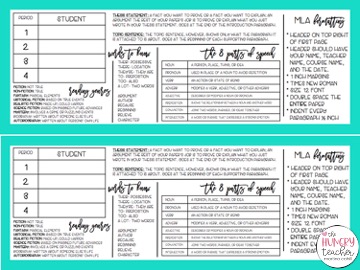
EXTRA STUDENT SUPPLIES ROUTINES
This shelf has been shown in other units, but it’s still important for routines and procedures. I want to make sure students, especially middle schoolers who switch classes every hour, have no excuse not to get their work done.
We make sure to have pencils, a pencil sharpener, a tape dispenser, a stapler, a hole punch, extra notebook paper, notecards, and then extra center cubby supplies (crayons, glue, markers, colored pencils).
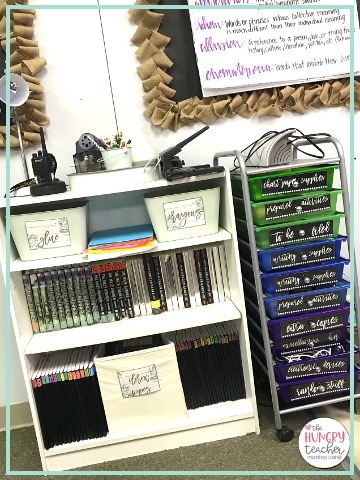
CHART PAPERS FOR PROCEDURES
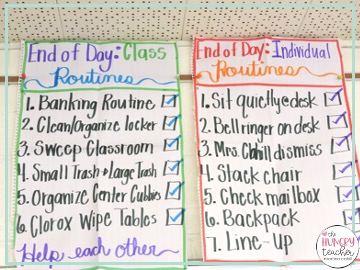
This is a copy of the routines and procedures that I used in my sixth grade class. We had routines for the start of day and the end of day.
They helped me make it, as we were all struggling to remember all the things we needed to do, and we didn’t have very much time to do it anyway.
We realized we really needed two charts because there was stuff we needed to do to get the classroom ready for tomorrow. They also needed to do some routines to be dismissed for the end of the day.
Honestly, it was probably more helpful for me (especially at first) but it made sure we did everything at the end of the day, which was the craziest for me. We did all the “class” routines first and then did the “individual” routines after.
BELL RINGERS AS A CLASSROOM ROUTINE
If you are a teacher who is really struggling with your start of class. I HIGHLY recommend bell ringers or warm-ups of some type. I have some in my TPT store and you can try them out for free for three weeks:
- Fifth and Sixth Grade ELA Bell Ringers | 3 Free Weeks
- Middle School Volume One ELA Bell Ringers | 3 Free Weeks
- Middle School Volume Two ELA Bell Ringers | 3 Free Weeks
- Root and Affix Bell Ringers | 3 Free Weeks
Some teachers have a quote on the board that students respond to, others have a math problem, and/or science teachers might have a scientific question on the board.
The point is, routine at the start of class is EVERYTHING. It will make the rest of your year so much better if you have a solid routine every single day. It’s never too late! I actually started these in December of my most difficult year of teaching, when I was about to lose my mind. Below shows how I grade so that it takes very little time (eventually students take over except the final day of the week) and still holds them accountable. Even more so it gives me a grade to input every single week.
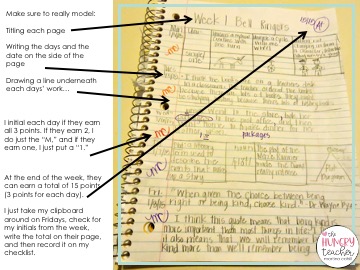
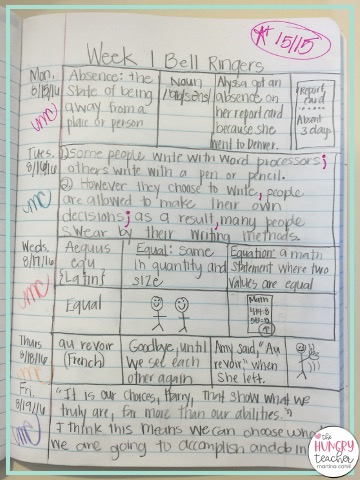
Mine are all pre-made, but there are tons of different ways you can do this to make it work for you and your students.
This previous page had an example from middle grade ELA Bell Ringers (I used them in 5th and 6th grade) while below is an image of what I use with my 7th and 8th graders.
My bell ringers are ELA based and I have used them in grades 5-8. I created mine to have novelty, but also predictability every single week. It is also a weekly grade.
My goal with bell ringers or warm-ups is something that doesn’t waste time, they teach students something ELA based, and is meaningful to the students.
I also didn’t want any copies or prep, because when I made them, I had basically no prep time, and very little copy amounts.
MIDDLE SCHOOL ELA BELL RINGERS
You could use a different set each for three different quarters, or if one works great for you, the year long bundles are available in my TPT store. I’ve included the links to the full files on TPT.
MENTOR SENTENCES FOR GRAMMAR ROUTINE
Another option for a warm or bell-ringer are grammar mentor sentences. I honestly don’t use this as a bell ringer, because they require much more involvement by me, especially in the beginning, and I like having my bell-ringer time to take attendance and such.
If you are more pressed for time and/or don’t need students to be completely independent during this warm up time, then mentor sentences might be the perfect fit for you. I do use them, but I just squeeze them in whenever I can.
The idea behind mentor sentences is to use strong sentences from popular novels to teach students all the CCSS grammar concepts. It’s exclusively how I teach grammar now and a great routine to add if you want a more authentic grammar experience.
I HIGHLY recommend the second volume if you are new to mentor sentences or if you teach fifth or sixth grade. The second time around I was much better at making them, they aren’t as difficult, and the concepts are much more streamlined.
SILENT READING ROUTINES
My classroom silent reading routines are probably the routines I get asked the most about, especially because I teach Middle School ELA now, instead of teaching in an elementary setting. I will talk about how my silent reading routine operated in upper elementary, and in middle school.
There are tons of professional development books that helped me gain a far better understanding of how to implement silent reading routines that were effective and didn’t create more work for me. I will give you a general routine of what I have implemented but I will also highly recommend the books that have made me a much more effective teacher who works to create lifelong readers.
Upper Elementary Professional Development Books:
- The Daily 5 by Gail Boushey and Joan Moser
- The Café Book by Gail Boushey and Joan Moser
- Reading in the Wild by Donalyn Miller
- The Book Whisperer by Donalyn Miller
Middle School Professional Development Books:
- The Book Whisperer by Donalyn Miller
- Reading in the Wild by Donalyn Miller
- Readicide by Kelly Gallapher
I know that’s not an extensive list, but these are the ones that got me started and helped me solidify my silent reading routines. Personally, I didn’t use The Café Book, but it is a companion book to The Daily 5. Many teachers implement them together. It was too elementary for my upper elementary kids, and I also taught those reading strategies through our reading units.
Here is a blog post on how my upper elementary routines looked.
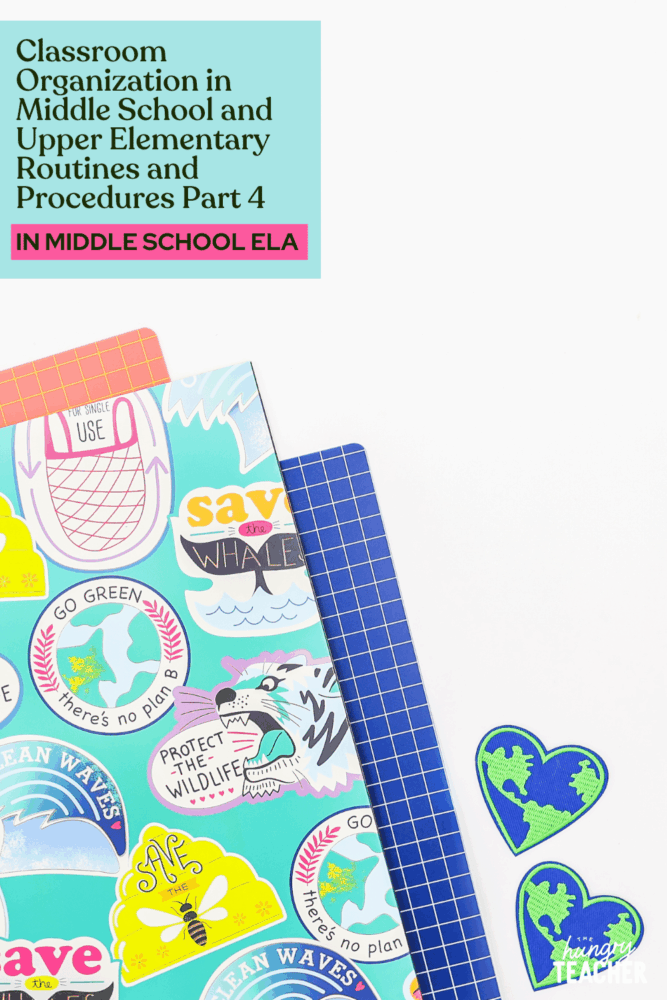
MY MIDDLE SCHOOL ELA SCHEDULES
Below I have made images of all my middle school ELA schedules. I have an entire blog post devoted to all my schedules as a middle school ELA teacher. It breaks down how I alternated units, plan out my school year, and more!
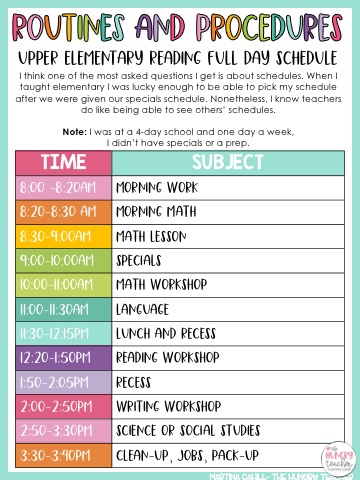
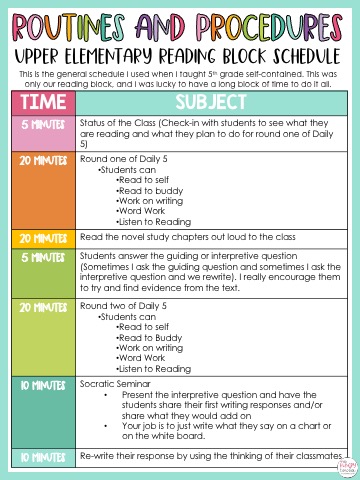
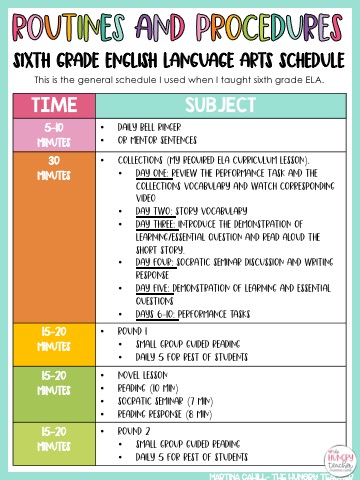
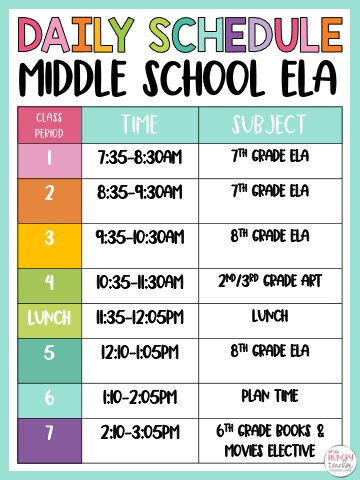
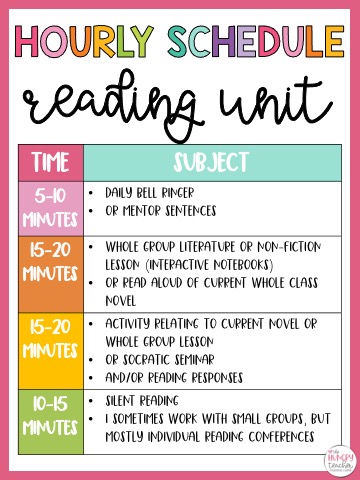
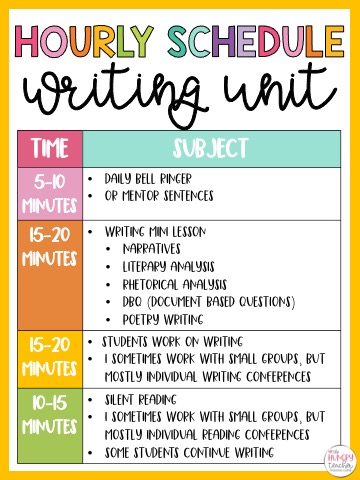
INTERACTIVE NOTEBOOK PROCEDURES
I talked about how we store all of the student materials in the last unit. Now I thought I would also take some time to talk about how the actual lesson classroom routine goes for interactive notebooks. I think many people who try interactive notebooks don’t give it a fair chance. To be fair, in the beginning, it seems to take FOREVER. To be honest, in the beginning it is definitely going to take longer than you would like. BUT if you give it a chance, and implement some routines and procedures it will get better.
Some tips: I always pass out all the papers, and then I start cutting out my own example. From day one, I tell them, “I passed out all the papers and then started cutting. I shouldn’t get done before you.” In the beginning, I still get done before a lot of them, but over time, they realize to put a little pep in their step.
NOTEBOOK SECTIONS
- I honestly have students who take FOREVER, no matter what. Especially when I taught 5th and 6th, I would ask if I could help, and I would just help them cut haha. Now in middle school, I tell them to ask a friend if they know they’re not going to be done in time. Nine times out of ten, it just becomes a natural part of the classroom routines.
- I also challenge the kids, especially in the beginning, to have only one large piece of scrap paper. I offer candy or classroom economy money, and after awhile it becomes second nature to them.
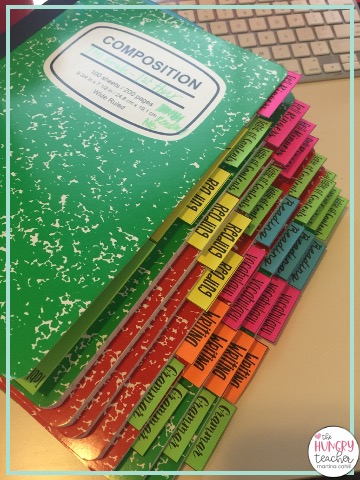
You can get these free editable notebook tabs by clicking here. Or you can purchase them in my store.

This is one of our classroom routines that makes the end of the day a million times easier.
- For coloring, I tell them when they are done cutting and gluing, to then color. This often means that some kids don’t get to color much. However, it’s rare that my slower cutters and gluers are really into coloring anyway. If they get done, they are told they MUST color if they are waiting. They are allowed to talk as much as they want during this time.
- I also keep these small trashcans at the end of each desk pod to ensure that no scraps end up on the floor. Someone throws them away in bigger trashcans when everyone is done. Sometimes I have to ask, some do it on their own.
TEACHER COPIES CLASSROOM ROUTINES
I have a REAL picture for you. This is basically what my bins have looked like every year. I have one for every day of the week, and then a folder for each grade level.
Doing it by class hour was just silly, because like I said, I do the same things with each grade level.
It’s so annoying to make 50 copies and then have to put ½ in first period for 7th grade and ½ in second period for 7th grade. I just put all 7th grade copies in one folder.
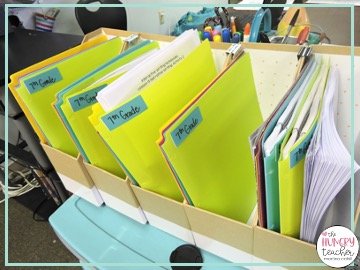
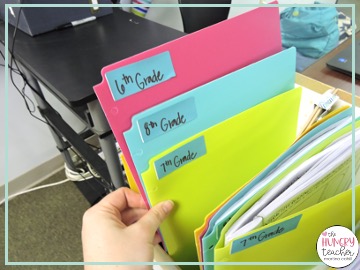
This is the order I see my classes and their coordinating colors. There is also a yellow folder in each bin, for stuff #Icanteven deal with right now, but may need for all classes at some point throughout the day (Scholastic orders, notes home, etc.)
I am all about classroom routines not being annoying. I DO NOT stick the stacks in the folder pocket. This makes it so I don’t even have to pull the folder out of the bin. I just stick the stacks in the folder. I tend to paperclip the stack so I can easily grab the whole thing when it’s time for the lesson.
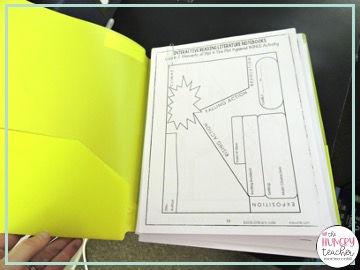
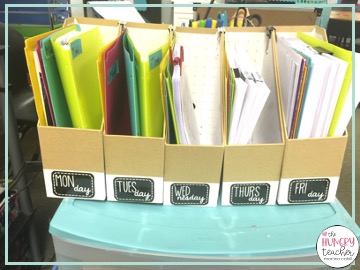
Above, you can see how I labeled each bin for the day of the week.
I got these labels form Literacy for Big Kids on TPT.
CLASSROOM LIRARY CHECKOUT ROUTINES
My library classroom routines are probably my most frequently asked question (I feel like I say that about everything, but I do get asked about this a lot). I will talk all things classroom library in the next unit, but here’s a preview.
Booksource App: I have tried it ALL. I tried scanning all my library books into the Booksource app and having kids check out books using the app. It did not work for me and my classroom’s needs. We needed WiFi on the iPod/device I had, and the kids continually needed my help. It wasn’t a problem that could be fixed by training a student(s), so it was more work for me than for them, which ruined the whole purpose for using that system.
LIBRARY CHECKOUT BINDER SYSTEM
Binder with papers: I also tried using a simple binder that students wouldn’t simply write their name, book title, and date in and out. This didn’t work because of how I did it. I just had a bunch of paper in there, but then the kids couldn’t find their name to return them ever.
If I had to do it over, I would make a separate paper for each kid just put them in alphabetical order. Then this also serves as a great reading status of which kids are reading and what they’re reading too!

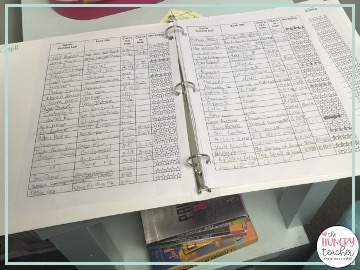
If I was self-contained I would just use one binder for the whole class. As a middle school ELA teacher with five sections, I had five different binders (one for each class) with that class in alphabetical order in the binder.
Here is a picture of where I kept the binder system when I used it in my middle school classroom.
GOOGLE FORM LIBRARY CHECKOUT
This is currently what I use and has been the most successful in terms of mine and the students’ consistency.
I just created the Google Form and it creates a Google sheet for me to use.
I can’t take credit for the idea, because I got it from Soaring Sandy’s blog post.
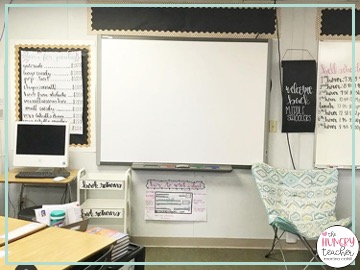
They use the computer pictured here, but they can also use their cell phones or any other device.
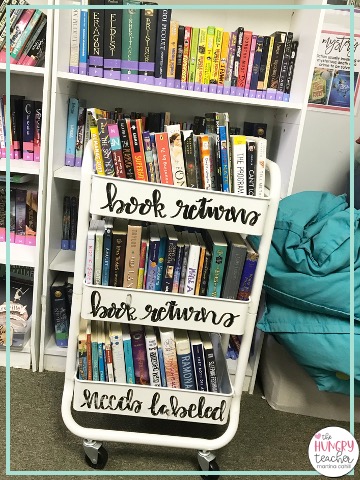
I personally have students return all books to this rolling cart I purchased. My students are honestly terrible about putting books back where they belong. This cart eliminates me having to redo it every single day.
I simply do it when I have time, but I often have student volunteers who do it for National Junior Honor Society community service hours, or classroom economy money.
I honestly never have an issue getting it done just by simply asking students.
MIDDLE SCHOOL ELA SYLLABUS
This is given to students at the start of the year, and I go over it.
It’s as much for teachers as it is for students. It forces me to think about how I want every routine and procedure to run in my classroom.
Click here or on the image to the right to purchase either of the editable versions in my TpT Store.
CLASSROOM ROUTINES FOR TURNING IN WORK
One routine that I always try to adjust, but that I always resort back to my old ways is students turning in work. I always have this strong desire to have turn in bins for each class period, and end up NEVER using them every single year. I’m truly very organized, but my brain works a certain way. I don’t think the bins work with the way my brain works.
This was one concept that changed a lot from my time in elementary with 24 students to middle school/high school with anywhere from 150-250 students. It takes me more time to go through the bins and get organized, then to do it the way I want in the first place.
Maybe it’s elementary, but I want to check off when students have turned in the work. I want to be able to check who still needs to submit their assignments. It’s also kind of for selfish reasons. I’m honestly willing to take work from students if it’s still within the grading period. BUT nothing annoys me more than when I have finally finished grading a mountain of 99 essays, only to have student number 100 then turn their essay in. I basically use all my energy to get through those essays. So I just don’t have the motivation to grade one more after I’ve made it through the stack.
I simply have class period students names’ checklists and print about 20 of them at the beginning of the year. Then I just always have each class period on its own separate clipboard. When we turn stuff in, I just call them up. Or as we finish essays, they just turn them in and I check them off as they finish and turn in and check them off. It seriously takes a minute.
CHECKING OF STUDENT WORK TURNED IN
Then I can see who hasn’t turned their assignment in and I immediately can check in with them, and keep doing so until they turn it in. I am mostly vigilant about this for their essays and big writing assignments in my class, but I try to do it for most of the assignments. There isn’t an updated picture, but I simply keep my clipboards in these class copies bins (wherever they fit) so I can grab them as needed to check off assignments.


I kind of hate returning work, because I feel like it takes forever, but this has been a system that works for me.
When having multiple class periods, I have to be able to pass them back. I don’t want the other class periods’ stuff in my way. During the day, I put their graded papers in this bin. Then just hand them back when they come into class and are working on their bell ringers.
The labels are from Miss West Best on TPT.
MIDDLE SCHOOL CLASSROOM ECONOMY
I know note everyone wants to deal with the hassle of a classroom economy system, especially when you have multiple class periods in a upper grade departmentalized, middle school, or high school setting. That being said, I still use one. I’m just being realistic in that I need a reminder to focus on the positive, and having this system helps me do that.
The Middle School Classroom Economy resource goes into much more detail about how I use it.
This middle school English teacher grading strategies for upper elementary and middle school grading and assessment blog post is part of a classroom organization series. This is part eight of ten blog posts all about how I organize different areas of my classroom. Click on any of the links to be taken to each of the posts in the series:
- One: Lesson Planning and Lesson Materials Organization
- Two: Teacher Materials Organization
- Three: Student Materials Organization
- Four: Classroom Routines and Novels Organization
- Five: Classroom Library Organization
- Six: Book Clubs, Novel Sets, and Literature Circles
- Seven: Small Group Organization
- Eight: Grading and Assessment
- Nine: Long-Term and Short-Term Sub Planning
- Ten: Back to School Organization
CLICK HERE to get the Organization Overhaul Complete Classroom Course plus bonus resources for each module.
CLICK HERE to get the complete printable organization E-Book.
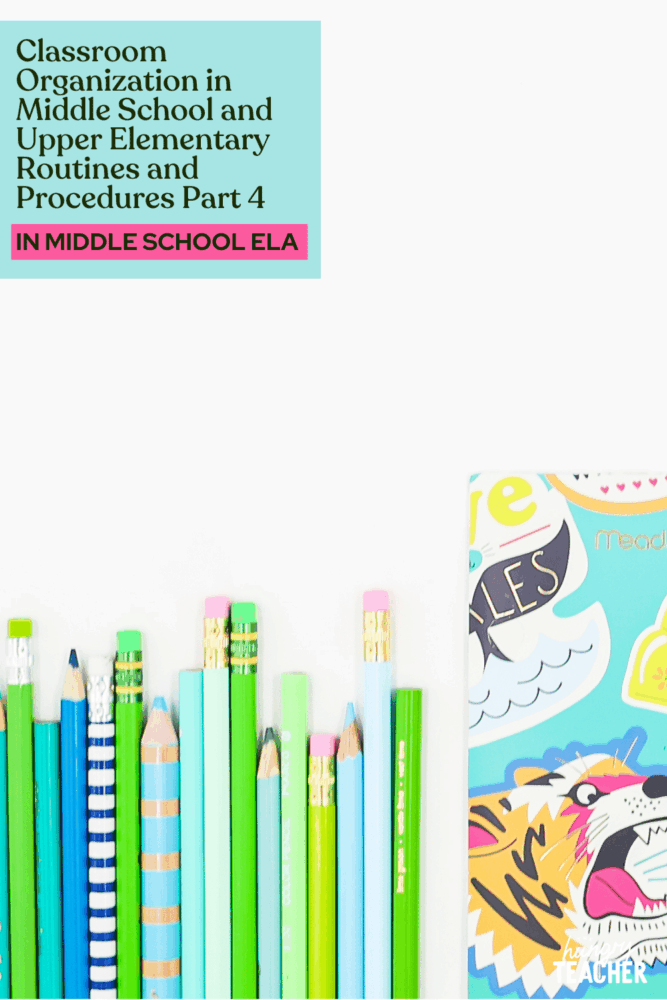
Get the Organization Overhaul Complete Classroom Course
Want a sneak peek at teaching The Hungry Teacher way—with support, structure, and strategy?
When you join the waitlist for The Hungry Teacher’s Hub membership, you get three free classroom-ready resources: a theme unit, an expository writing unit, and a grammar unit introducing mentor sentences. Plus, you’ll get immediate access to a selection of exclusives from the Hub, including editable sub plans, pacing guides, and more.
No strings attached. Just resources you can use right now—and a heads-up when the Hub opens.
3 Free Middle School ELA Units—yours to keep!
JOIN THE WAITLIST + A FREE GIFT
Where to next, line leader?
Welcome to The Hungry Teacher! We create resources that are easy to use, practical, and get results. Teach with confidence—and make it home before dinner.
xo, the hungry teacher
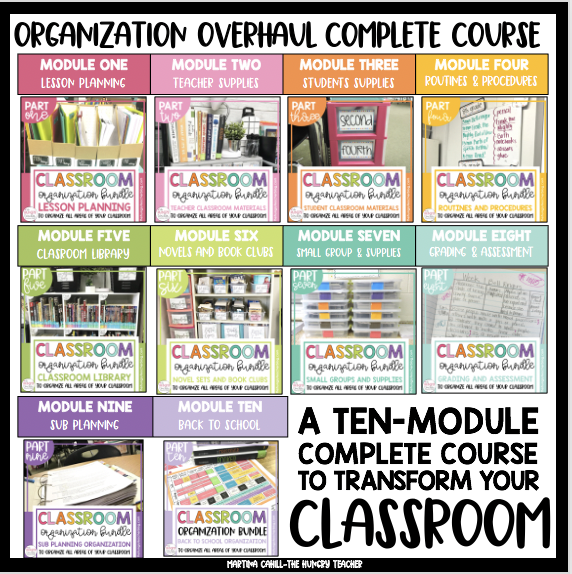
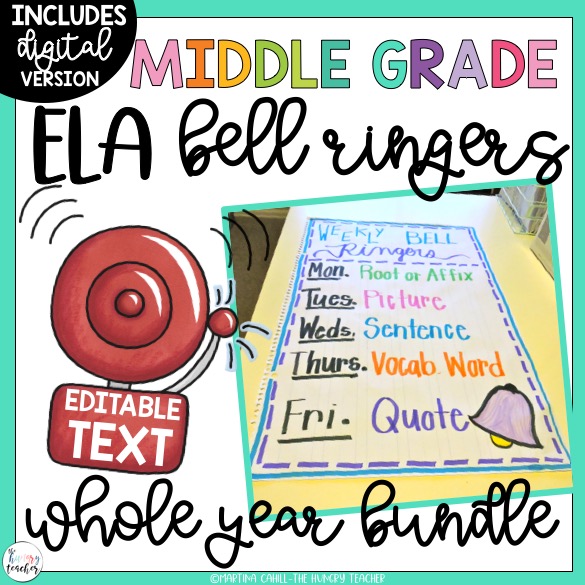


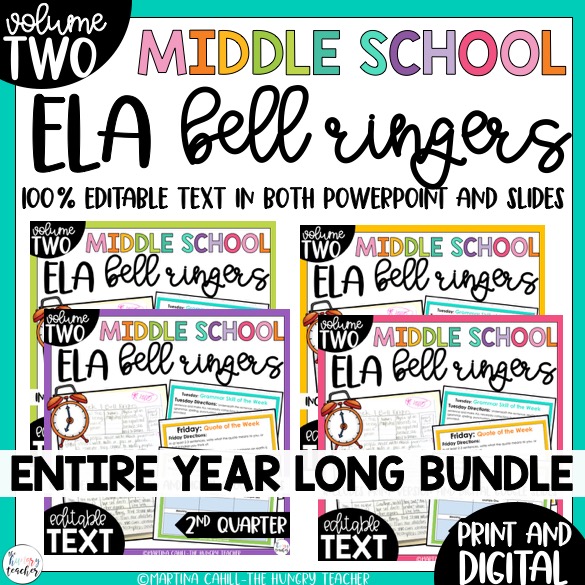
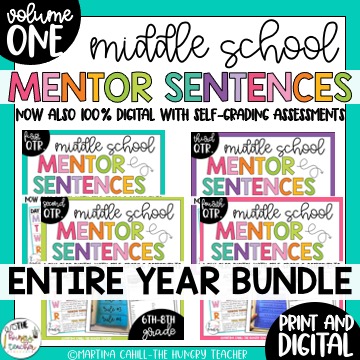
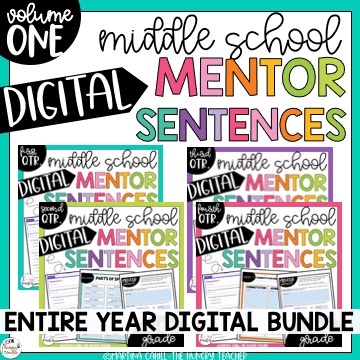
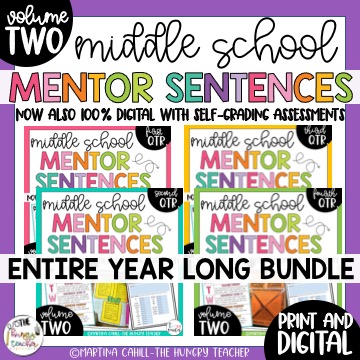
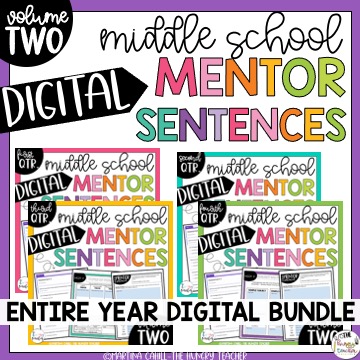

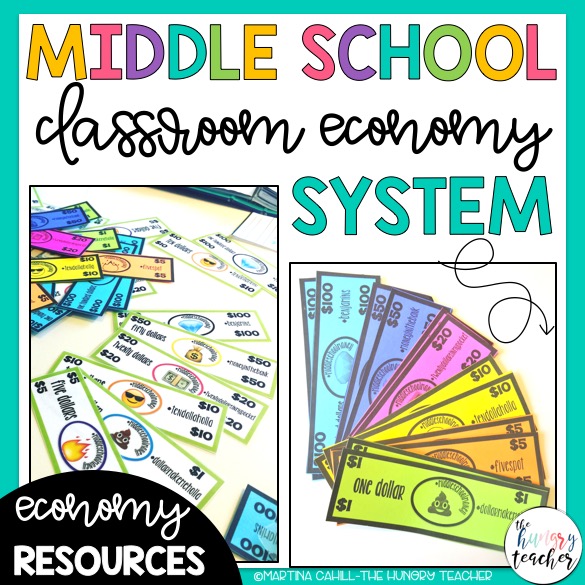
Interesting blog and I really like your work and must appreciate you work for the Luis Almeida keep posting.
Luis Almeida
How do you grade your Bellringers? Just curious if you do it as completion.
What happens when a student is habitually absent and never claims their makeup work? Does the folder stay full, or do you orchestrate a claim policy?
I am curious to find out what post platform you're utilizing? I'm having some minor security problems with my latest post and I'd like to find something more risk-free. Do you have any recommendations? best seo company singapore
My spouse and I stumbled over here different web page and thought I should check things out. I like what I see so now i'm following you. Look forward to looking at your web page for a second time.sem agencies
I really like your blog.. very nice colors & theme. Did you create this website yourself or did you hire someone to do it for you? Plz reply as I'm looking to construct my own blog and would like to find out where u got this from. kudos acute back pain
Valuable info. Lucky me I found your website by accident, and I'm shocked why this accident did not happened earlier! I bookmarked it. singapore truck
You can definitely see your expertise in the work you write. The world hopes for even more passionate writers like you who are not afraid to say how they believe. Always go after your heart. Facebook advertising campaign
Thanks so much for giving everyone an extraordinarily splendid possiblity to read from this website. It's usually very lovely and jam-packed with fun for me personally and my office acquaintances to visit your web site nearly three times every week to see the new guidance you have got.Melbourne wedding photography